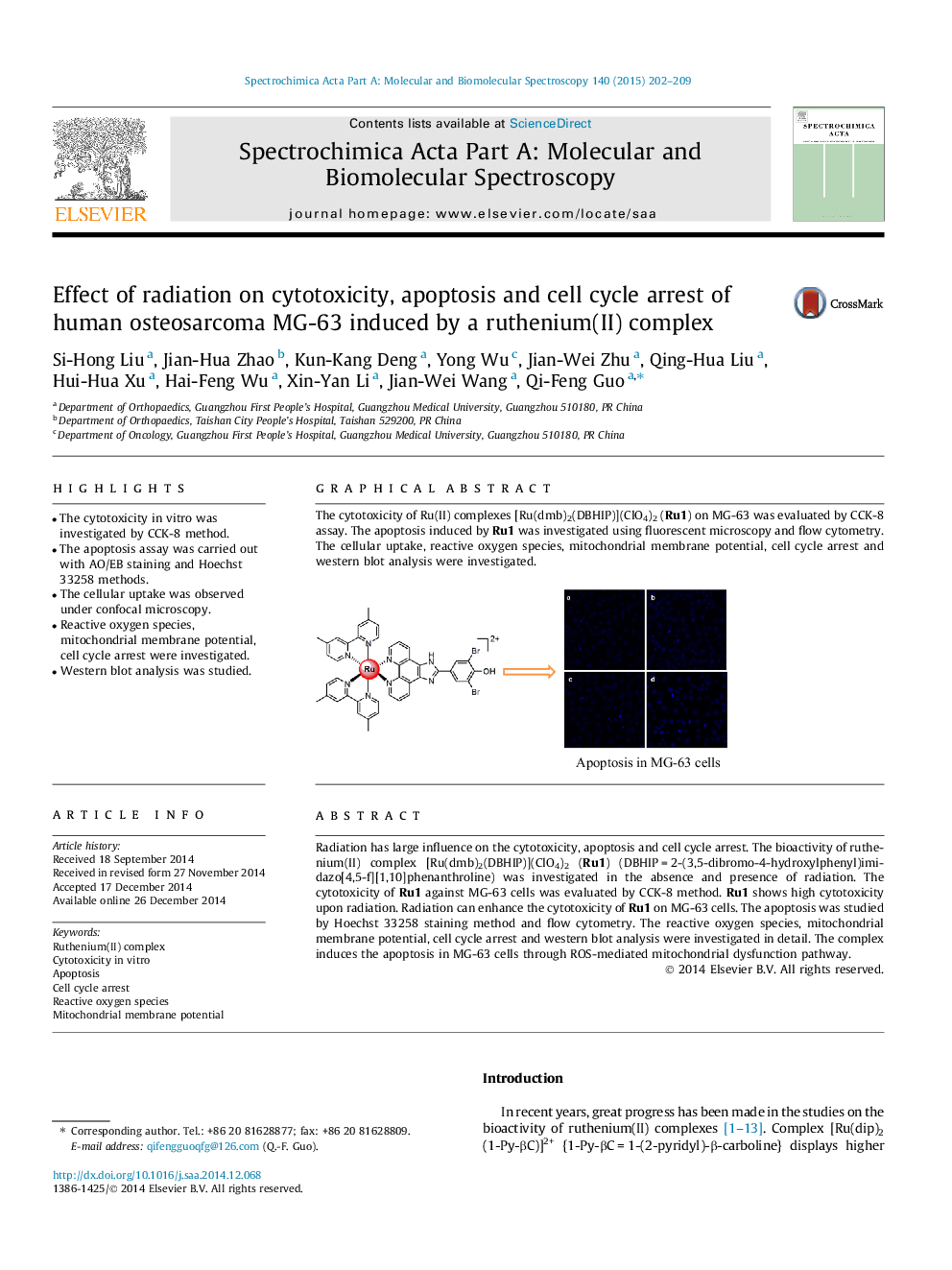| Article ID | Journal | Published Year | Pages | File Type |
|---|---|---|---|---|
| 1229371 | Spectrochimica Acta Part A: Molecular and Biomolecular Spectroscopy | 2015 | 8 Pages |
•The cytotoxicity in vitro was investigated by CCK-8 method.•The apoptosis assay was carried out with AO/EB staining and Hoechst 33258 methods.•The cellular uptake was observed under confocal microscopy.•Reactive oxygen species, mitochondrial membrane potential, cell cycle arrest were investigated.•Western blot analysis was studied.
Radiation has large influence on the cytotoxicity, apoptosis and cell cycle arrest. The bioactivity of ruthenium(II) complex [Ru(dmb)2(DBHIP)](ClO4)2 (Ru1) (DBHIP = 2-(3,5-dibromo-4-hydroxylphenyl)imidazo[4,5-f][1,10]phenanthroline) was investigated in the absence and presence of radiation. The cytotoxicity of Ru1 against MG-63 cells was evaluated by CCK-8 method. Ru1 shows high cytotoxicity upon radiation. Radiation can enhance the cytotoxicity of Ru1 on MG-63 cells. The apoptosis was studied by Hoechst 33258 staining method and flow cytometry. The reactive oxygen species, mitochondrial membrane potential, cell cycle arrest and western blot analysis were investigated in detail. The complex induces the apoptosis in MG-63 cells through ROS-mediated mitochondrial dysfunction pathway.
Graphical abstractThe cytotoxicity of Ru(II) complexes [Ru(dmb)2(DBHIP)](ClO4)2 (Ru1) on MG-63 was evaluated by CCK-8 assay. The apoptosis induced by Ru1 was investigated using fluorescent microscopy and flow cytometry. The cellular uptake, reactive oxygen species, mitochondrial membrane potential, cell cycle arrest and western blot analysis were investigated.Figure optionsDownload full-size imageDownload as PowerPoint slide
